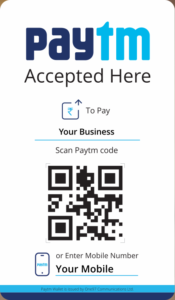
Earlier this month I had a chance to be on a panel discussing User Experience (UX) for payments. The panel was part of the Fintegrate Zone 2017 event located at the BSE Building in Bombay hosted by the Zone Startups.
The panel was moderated by Harsimran Julka @HarsimranJulka an editor for the Economic Times. The panel included:
Anurag Sinha, Co-Founder, Walnut App
Deepak Agarwal, CDO, Barclays Wealth
Sohini Rajola, @RajolaSohini, RVP, Western Union
Tina Singh, @tinasinghj, CDO, Mahindra Finance
Malcolm Anthony, Head of User Experience Design, PayPal
Nitin Vyakaranam, @vnitinb, Founder & CEO, ArthaYantra
As with any recent discussion involving the Indian financial markets half the time was devoted to talking about Modi’s demonetization. It was more about who benefited from it and who struggled with it, as a whole most fintech startups all benefited from it.
Although we touched on the overall user experience of payments and had much to debate about, I still feel most of the world is struggling with a seamless payment experience. Part of the issue is that people are used to physical cash and it’s been around for ages. People are familiar with it and how to use it, kids from a very young age are taught about physical money and many have piggy banks with some of that loot! Basically, cash is convenient, intuitive and effortless.
But as with everything else, we need to move forward and electronic payments are the future and most governments are behind it as a way to tackle the black money and counterfeit money. Credit/debit cards are a hybrid instrument, although the card is physical in nature it connects to an electronic platform to authorize, clear and settle the payments. Credit cards are prone to fraud since someone can steal your card, go to an online store and enter your card details and buy stuff.
This is where a whole new generation of solutions are entering the marketplace under the banner of mobile proximity payments (MPP), this includes near field communications (NFC) and quick response (QR) codes. NFC is the technology behind Apply Pay, Google Pay, Visa payWave and MasterCard contactless, it’s a communications protocol that works with devices that are within inches of each other. With Apple Pay when you are ready to checkout, the retailers point of sale (POS) system will “talk” to your phone and then you use Touch ID to authenticate and enable the payment. That really is the way to do it. The problem with NFC is that the phone has to have an NFC chip and so does the retailers POS system. I don’t see this gaining much traction in India as many of the phones are fairly inexpensive and won’t include an NFC chip for years.

Surprisingly, because of India’s demonetization the use of QR codes has gone from a niche type of application to full mainstream usage. Demonetization was a stroke of luck for Paytm and they turned it into gold. Overnight people needed to send money and many people quickly downloaded the Paytm app and started to transact.
A couple weeks ago, I used the QR code functionality to pay for parking at Phoenix Mills and it was pretty seamless. Since all smartphones have a camera they can scan this QR code and submit a payment to an individual or retailer. I really see this taking off and becoming the standard in India, it’s a low tech solution but sometimes that’s required to get high (mass) adoption in India.

